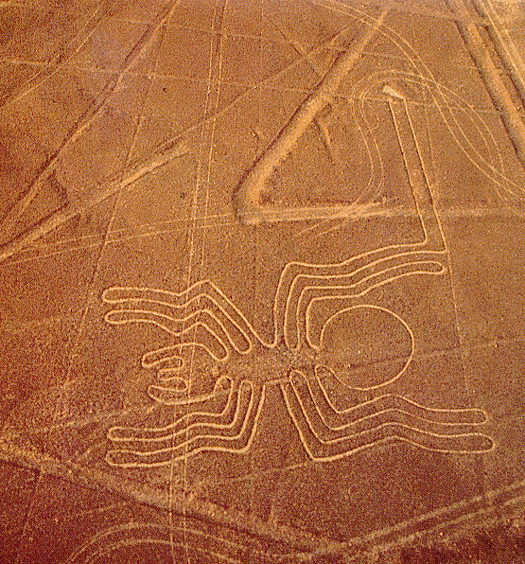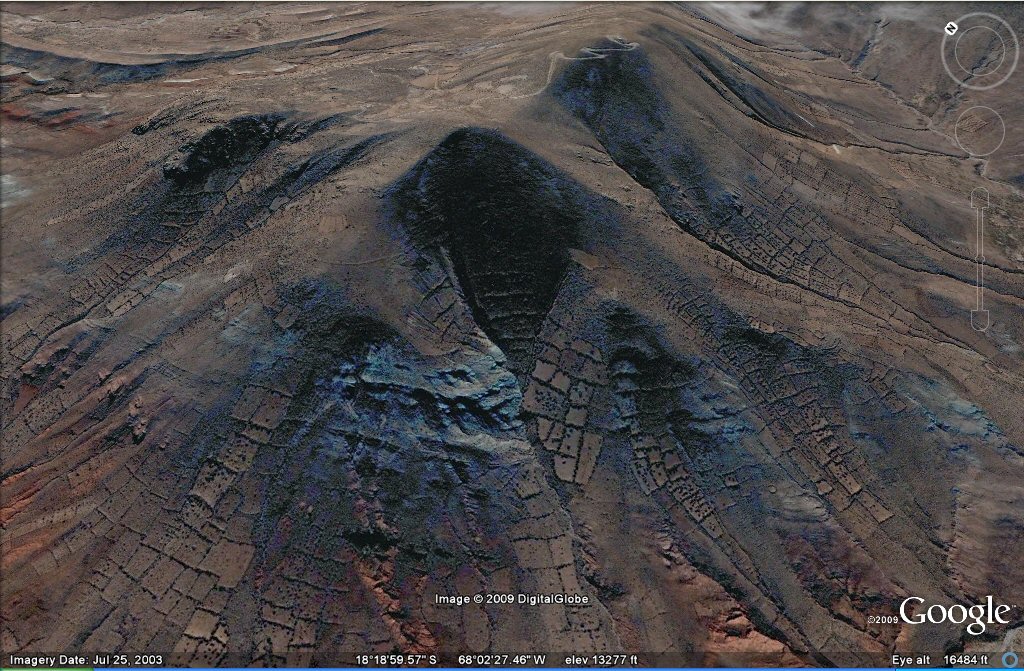And she did it using Google.
You may not be able to see it so clearly but time and wear would certainly have made geoglyphs less obvious, though how and why anyone would have made them is also not obvious - unless they were insuring some deity or another could see something more interesting than farmers when they looked down.
Like the Lascaux Cave art, she says the new geoglyphs would have been made using the most recent technology for communicating a 'design' message. In places where writing developed quickly, that was the medium but in instances where writing did not develop, landscape communication may have been used.
In South America, landscaping had obvious practical uses - cutting flattened sections into hillsides allowed for manageable farmland and irrigation. Some were geometrically uniform but did they also get used for graphic art?

Nazca lines. Arguably the most famous geoglyphs, were discovered accidentally by an airplane in 1927.
Well, first a cautionary note; one of her references is a site claiming that Bolivia was Atlantis. Invoking Plato and then massaging data to fit into a favorite hypothesis would ordinarily raise a red flag so we're all forgiven for being a little skeptical. That aside, and since I am no archeology expert I won't comment on the references but instead stick to the topic. They also used Google to capture some neat images, like this one:

Fields on mountainside, oblique view near Turco/Carangas, Lake Poopo zone.
So geoglyphs are certainly not something new in Peru but this would be the first time they have been found in this section.
Sparavigna made the connection to graphic design by assuming ponds would be eyes, a reasonable idea. But Rossella Lorenzi writing on Discovery spoke with anthropologist Clark Erickson at Penn who said, "The identifications of particular symbols such as birds, snakes, etc. are not convincing. For example, what appears to be 'a bird wing' in one image, is a modern plowed field with stacks of drying barley or wheat."
Snake art or coincidence? You tell me.

Animal biting the body of a snake. Credit: Amelia Carolina Sparavigna
Citation: Amelia Carolina Sparavigna, 'Geoglyphs of Titicaca as an ancient example of graphic design', arXiv:1009.4602v1



Comments